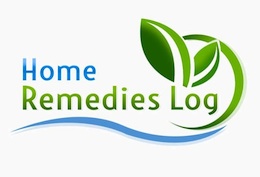
Bee Balm-Monardafistulosa
We are all aware of how hard bees work to produce bees wax and manipulate bee balm.
If we were only as industrious as the bees, we would also bear good fruit. Usually, it is honey that is attributed to bees. Although they are interrelated, it is important to step back and distinguish between the two terms in order to appreciate the bigger picture.
Mind Your Bees Wax
The term, itself, has evolved from the vernacular and had assumed the form of “bee’s wax” which effectively replaced the word “business” in the phrase: “mind your own bee’s wax.” According to some experts, bees wax is a type of hard wax comprised of a compound of chemicals, which is produced naturally by honey bees, specifically worker bees, (female bees), which secrete the substance from special wax glands built into the side of their bodies. This is only accomplished at temperatures of 33 degrees Celsius; but not exceeding 36 degrees Celsius.

The wax found in the hives is composed of fatty acids and distinctive alcohols. The equivalent amount of honey needed to make 1 pound of wax is approximately 10 pounds. You could essentially build a small home with such an amount; and in fact, that’s exactly what they do! They use the wax that they produce to build honeycomb cells for which to raise their young; as well as, to store honey and pollen. Producing their wax is not an easy task. A swarm of bees will devour close to about eight times as much honey by mass. They fly, on estimate of 150,000 miles, or six times around the earth, just to harvest one pound of bees wax.
Bee It as It May
Diaper Rash Cream Recipe:
Bees not only yield this wax for their own ends; but, it also proves to be beneficial for us humans. Bees wax, aside from being material for building honeycombs; when manufactured by elements of purification and bleached, can be used as an important source of food, even suppressing the aging process. It could serve as the coating for cheese, or as an additive. Cosmetic innovations have also sprung from the use of bees wax to manufacture creams such as petroleum jelly. Respectively, it has become an ingredient for facial products and many others. Pharmaceuticals can, likewise, benefit from this wax in various aspects. Other uses include: candles, shoe polish, turpentine, lip balm, and even modeling material.
The Beautiful Bee Balm
In relation to the bees wax which has seen various innovations in society, bee balm can be associated with, yet another way bees are able to manipulate the environment we live in. Bee balms are dazzling flowers that come in many colors and in multiple numbers. These flowers bloom in the early months of summer up to the end, growing to heights of four feet. It is possible to plant them in gardens; however, they thrive on somewhat wet soil in order to flourish. Hummingbirds, butterflies; and of course, bees flock to this tube-shaped herb for nectar. Consequently, the leaves of the bee balm, including the flower itself can be collected to make tea.
Don’t Worry, Bee Happy
It is a little well-known fact that bee balm was used quite periodically by the American Indians in form of medicine and even as a beverage to combat certain diseases during the colonial times. Aside from its use as a tasty, mint-flavored tea, it provided a remedy for illnesses. Surprisingly, it was almost a necessity in households as it was ideal for digestion, calming the urges of flatulence, reduced bloating and menstrual cramps, and improved appetite. It was also effective in alleviating scenes of vomiting, nausea, and similar cases. It seemed to be the answer to many of the ailments circulating around communities.
The remarkable compound produced by bee balm seemingly had improved the quality of life in many aspects. Aside from its therapeutic role as an aromatherapy herb, it was also beneficial as an antiseptic or antibacterial solution. Similar to finds concerning other herbs and flowers, a certain amount of caution should always be exercised. There are considerations to be taken which are, in turn, dependent on the present human condition.
To Bee or Not To Bee
Bees wax and bee balm has long been in existence and endured the test of time. Each of these elements has the commonality of being enjoyed as a result of the great industry of bees. Certainly, they continually prove to be a vital part of our societal structure and the markets by which we entrust our well-being and our future. The fact still remains that in our constant search to find what we deem to be the fountain of life, we ought not to overlook the facts. Many have tried to test the tides, but have been left in the waves. At the same time, we cannot deny what has been given to us. Bees wax and Bee balm are certainly magnificent contributions to our time.


